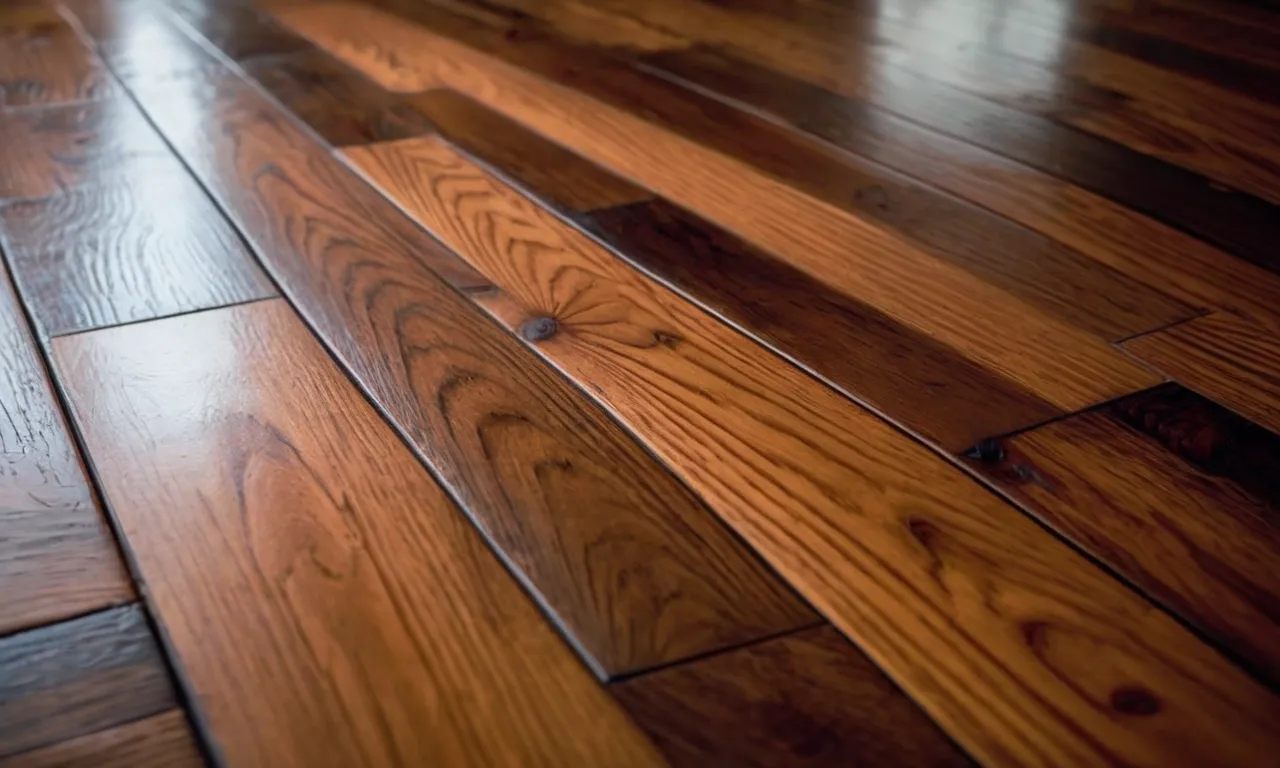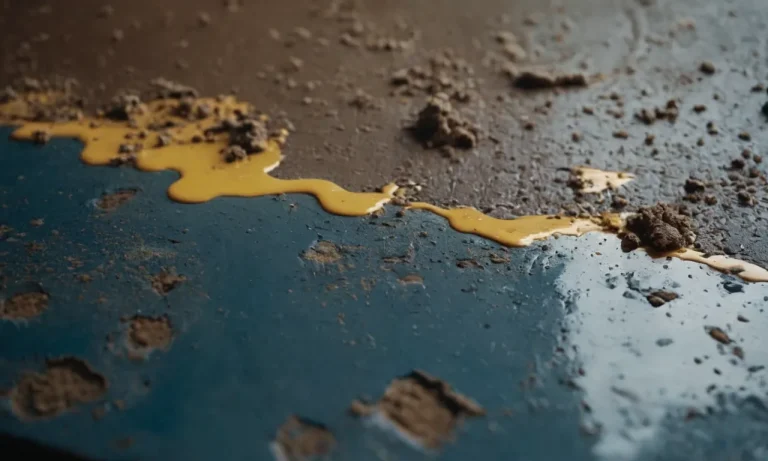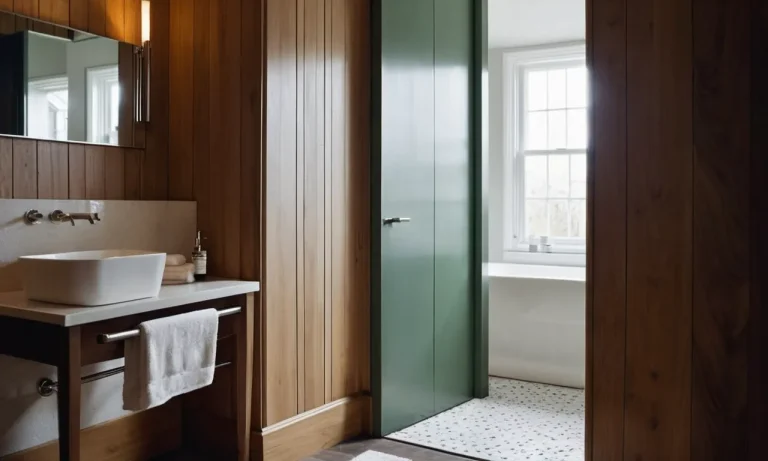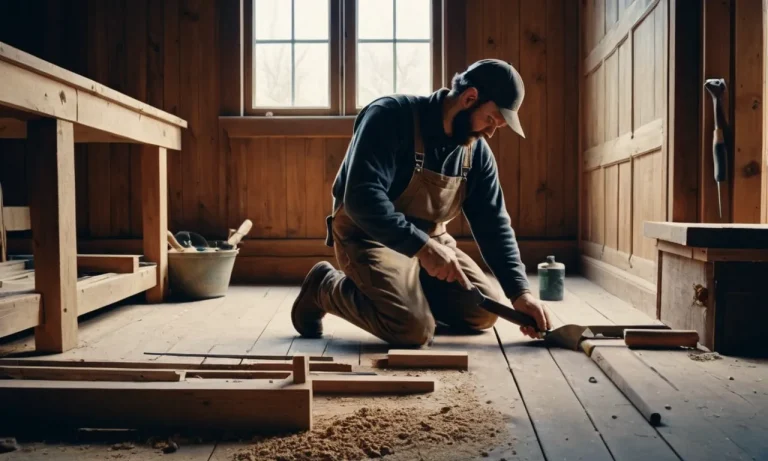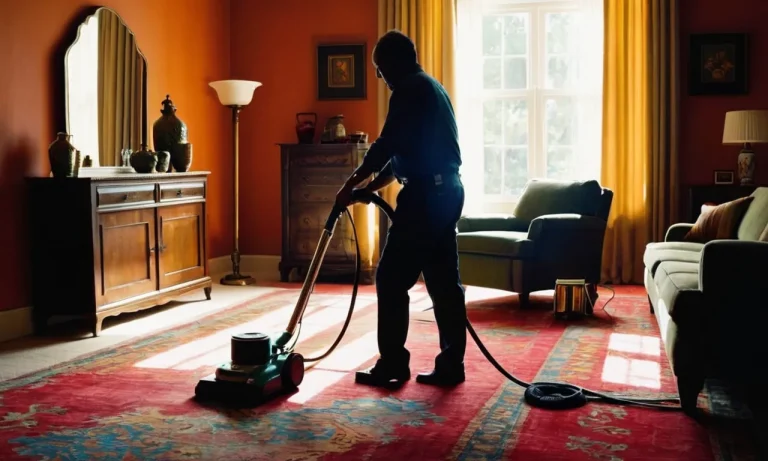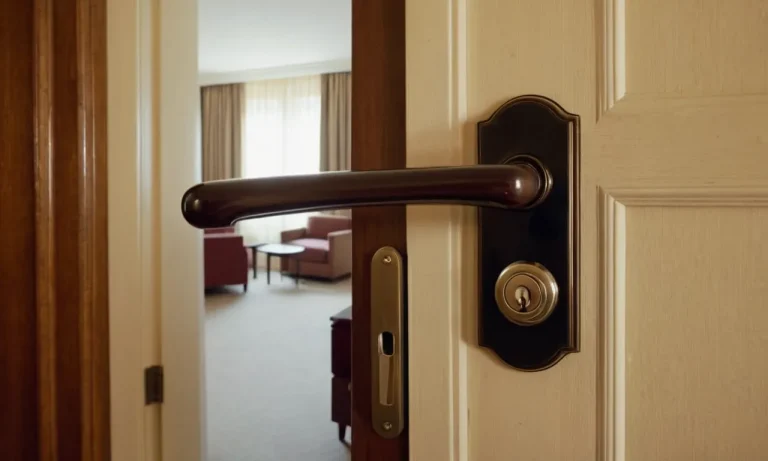How To Restore Hardwood Floors Without Sanding
Hardwood floors add warmth and character to any home. But over time, scratches, dullness, and wear can make them lose their luster. If your hardwood floors are looking a little lackluster, you may be tempted to sand them down to the bare wood and refinish them completely.
However, sanding hardwood floors is an intense, messy, and time-consuming process. Thankfully, there are ways to refresh your hardwood floors without taking on a full sanding and refinishing project.
If you need a quick solution to improve the appearance of your hardwood floors, here are some options that don’t require sanding: clean thoroughly, use filler and touch-up markers for scratches, recoat with polyurethane, or use products like oil soap or restorative wax to add shine.
In this comprehensive guide, we’ll explore several techniques for restoring hardwood floors without sanding. We’ll cover cleaning, repairing scratches, recoating, rewaxing, and more. With the right products and techniques, you can breathe new life into your hardwood floors without the dust and disruption of sanding.
Thoroughly Clean the Floors
Before starting the process of restoring hardwood floors without sanding, it is crucial to thoroughly clean the floors. This step helps to remove dirt, dust, and other particles that can potentially damage the surface of the wood.
Here are some important subheadings to follow during the cleaning process:
Sweep and Vacuum
The first step in cleaning your hardwood floors is to sweep and vacuum the entire area. This will help remove loose dirt, dust, and debris that may have accumulated over time. It is recommended to use a soft-bristle broom or a vacuum cleaner with a floor attachment to prevent scratching the surface of the wood.
Make sure to pay attention to the corners and edges of the room where dirt tends to accumulate.
Wash with Hardwood Floor Cleaner
After sweeping and vacuuming, the next step is to wash the hardwood floors with a suitable hardwood floor cleaner. There are various products available specifically designed for cleaning hardwood floors. These cleaners are formulated to effectively remove dirt and grime without damaging the wood.
Follow the instructions on the cleaner and use a mop or a microfiber cloth to apply the solution onto the floors. Be sure to wring out the mop or cloth well to avoid excessive moisture.
Use Cleaning Products Meant for Hardwood
It is important to use cleaning products that are specifically meant for hardwood floors. Avoid using harsh chemicals or abrasive cleaners that can strip away the finish or cause discoloration. Look for products that are labeled as safe for use on hardwood and follow the manufacturer’s recommendations for application and dilution.
Avoid Excessive Water
When cleaning hardwood floors, it is crucial to avoid excessive water. Excessive moisture can seep into the wood and cause swelling, warping, or even mold growth. Use a damp mop or cloth to clean the floors instead of saturating them with water.
Additionally, immediately wipe up any spills or wet spots to prevent damage to the wood.
By thoroughly cleaning your hardwood floors before the restoration process, you will ensure that the surface is free from dirt and debris, allowing for better results when applying the subsequent steps.
Remember to always follow the manufacturer’s guidelines and recommendations for the cleaning products you use on your hardwood floors.
Repair Scratches and Damage
Over time, hardwood floors can develop scratches and other forms of damage. Restoring them without sanding is a great option to save time and money. Here are some effective methods to repair scratches and damage on hardwood floors:
Fill in scratches with filler
If your hardwood floors have minor scratches, using a wood filler can help conceal them. Start by cleaning the scratched area thoroughly with a damp cloth. Then, apply a small amount of wood filler to the scratch, using a putty knife or a similar tool.
Make sure to choose a filler that matches the color of your floor. Once the filler is dry, gently sand it with fine-grit sandpaper to create a smooth surface. Finally, apply a layer of protective finish to blend the repaired area with the rest of the floor.
Use touch-up markers for spot repairs
For smaller scratches or scuffs, touch-up markers can be a quick and easy solution. These markers come in various shades to match different wood colors. Simply choose a marker that matches your floor and apply it directly to the scratch.
Gently rub the marker over the scratched area until it blends in. Finish off by wiping away any excess marker and applying a protective finish to seal the repair.
Repair deep gouges by refinishing just damaged areas
Deeper gouges or larger areas of damage may require more extensive repair. Instead of sanding the entire floor, you can refinish just the damaged areas. Start by cleaning the damaged area and removing any dirt or debris. Then, use a fine-grit sandpaper to smooth out the damaged surface.
Apply a wood stain that matches the color of your floor, and allow it to dry completely. Finally, apply a protective finish to seal the repaired area and ensure it blends in with the rest of the floor.
Remember, it’s always a good idea to test any repair method on a small, inconspicuous area of your hardwood floor before applying it to a larger, more visible area. This will help you ensure that the repair method works well and doesn’t cause any further damage.
For more detailed instructions and tips on restoring hardwood floors without sanding, you can visit websites like This Old House or Bob Vila.
Recoat Floors with Polyurethane
When it comes to restoring hardwood floors without sanding, recoating them with polyurethane is a great option. This process helps to rejuvenate the appearance of the wood while also providing a protective layer that helps to extend the life of the floors.
Here are some steps to follow when recoating your hardwood floors with polyurethane:
Lightly sand floors first
Before applying the polyurethane, it is important to lightly sand the floors to remove any imperfections or rough areas. This can be done using a sanding block or a floor buffer with a sanding pad. The goal is to create a smooth surface for the polyurethane to adhere to.
Vacuum up dust
After sanding, it is crucial to thoroughly clean the floors to remove any dust or debris. Vacuuming the floors with a soft brush attachment is an effective way to remove the dust without scratching the surface.
Additionally, wiping the floors with a microfiber cloth can help to eliminate any remaining dust particles.
Apply 2-3 thin coats of polyurethane
Once the floors are prepped and clean, it’s time to apply the polyurethane. It is recommended to apply 2-3 thin coats rather than one thick coat. This helps to ensure an even application and reduces the likelihood of streaks or bubbles.
Using a high-quality brush or roller, apply the polyurethane in the direction of the wood grain, working in small sections at a time.
Allow proper drying time between coats
After each coat of polyurethane, it is crucial to allow sufficient drying time before applying the next coat. This can vary depending on the specific product used, so be sure to carefully read and follow the manufacturer’s instructions.
Rushing the drying process can lead to an uneven finish or even damage to the floors.
By following these steps and taking the time to properly recoat your hardwood floors with polyurethane, you can restore their beauty and protect them for years to come. If you are unsure about any part of the process, it is always a good idea to consult with a professional for guidance.
Refresh Shine with Oil Soap
If you’re looking to restore the shine of your hardwood floors without the hassle of sanding, using oil soap can be a great option. Oil soap is a type of cleaning product specifically designed for wood surfaces.
It not only helps to remove dirt, grime, and stains but also nourishes and rejuvenates the wood, giving it a beautiful shine.
What is oil soap?
Oil soap is a gentle cleaning solution made from a combination of vegetable oil, water, and other natural ingredients. It is specially formulated to clean and protect wood surfaces, making it an ideal choice for restoring hardwood floors.
Unlike traditional soaps and detergents, oil soap does not leave behind a residue or strip the natural oils from the wood.
How to clean floors with oil soap
Cleaning your hardwood floors with oil soap is a relatively simple process. Here’s a step-by-step guide to help you get started:
- Start by sweeping or vacuuming the floor to remove any loose dirt or debris.
- Mix the oil soap with water according to the instructions on the bottle.
- Dip a mop or a soft cloth into the mixture, wring out any excess liquid, and then gently mop the floor in the direction of the wood grain.
- Pay special attention to any stubborn stains or high-traffic areas.
- Allow the floor to air dry completely before walking on it again.
- For best results, repeat the process every few months to maintain the shine and cleanliness of your hardwood floors.
Benefits and drawbacks of oil soap
Using oil soap to refresh your hardwood floors offers several benefits. Firstly, it is a non-abrasive solution, which means it won’t damage the wood surface. Secondly, oil soap helps to restore the natural shine of the wood, making it look brand new.
Additionally, it is an eco-friendly option as it is made from natural ingredients.
However, it’s important to note that oil soap may not be suitable for all types of wood finishes. It is always recommended to test the product on a small, inconspicuous area before using it on the entire floor.
Additionally, excessive use of oil soap can lead to a buildup on the surface of the wood, which may require additional cleaning in the future.
To learn more about oil soap and its benefits for hardwood floor restoration, you can visit www.hardwoodinfo.com. They provide in-depth information and tips on maintaining and caring for hardwood floors.
Rewax Floors for a Protective Coating
One of the key steps in restoring hardwood floors without sanding is to rewax them for a protective coating. Waxing not only enhances the natural beauty of the wood but also adds a layer of protection against everyday wear and tear. Here are some important subheadings to consider:
Strip off old wax first
Before applying new wax, it is crucial to strip off any old wax that may be present on the hardwood floors. This can be done using a wax stripper or a solution of warm water and vinegar. Simply apply the stripper or solution to the floor and scrub gently with a soft-bristle brush or a mop.
Rinse the floor thoroughly and allow it to dry completely before moving on to the next step.
Apply new wax in thin, even coats
Once the old wax has been removed, it’s time to apply the new wax. Choose a high-quality floor wax that is specifically designed for hardwood floors. Using a clean, lint-free cloth or a wax applicator, apply the wax in thin, even coats.
It’s important not to apply too much wax at once as it can lead to an uneven finish. Allow each coat to dry completely before applying the next one.
Buff wax once fully dry
After applying the final coat of wax and allowing it to dry completely, it’s time to buff the floor. Buffing helps to bring out the shine in the wax and creates a smooth, polished finish. You can use a floor buffer or a soft cloth to buff the wax.
Move in a circular motion and apply gentle pressure to achieve the desired shine. Take care not to over-buff as it can remove the wax coating.
Remember, rewaxing your hardwood floors provides a protective coating that helps to prolong their lifespan and keep them looking great. By following these steps, you can restore your hardwood floors without the need for sanding, saving both time and money.
Use Restorative Products
When it comes to restoring hardwood floors without sanding, using the right products is essential. There are several restorative products available in the market that can help bring back the shine and beauty of your hardwood floors.
These products are specifically designed to revitalize worn-out wood surfaces and eliminate scratches, scuffs, and dullness.
Restorative waxes and polishes
Restorative waxes and polishes are great options for bringing back the luster to your hardwood floors. These products typically contain a blend of oils and waxes that penetrate the wood, nourishing it and providing a protective layer.
They can effectively fill in minor scratches and revive the natural color of the wood. Simply apply the product following the manufacturer’s instructions and enjoy the renewed shine of your floors.
Hardwood floor restorers
If you’re dealing with more significant damage or wear on your hardwood floors, you may want to consider using a hardwood floor restorer. These restorative products are specially formulated to repair deep scratches, discoloration, and even water damage.
They typically come in liquid form and can be applied with a mop or a microfiber cloth. Be sure to choose a product that matches the type of wood you have for the best results.
Consider hiring a pro for best results
While it is possible to restore hardwood floors without sanding using restorative products, it can be a time-consuming and labor-intensive process. If you want to ensure the best results and avoid any potential mistakes, it might be worth considering hiring a professional.
Professional floor restoration services have the expertise, experience, and specialized equipment to restore your hardwood floors efficiently and effectively. They can assess the condition of your floors, recommend the most suitable products, and deliver exceptional results.
Remember, always follow the manufacturer’s instructions when using any restorative products on your hardwood floors. Additionally, it’s essential to regularly clean and maintain your floors to prevent further damage and extend their lifespan.
With the right products and proper care, you can enjoy beautiful, restored hardwood floors for years to come.
Conclusion
With a little elbow grease and the right products, you can refresh your hardwood floors without taking on a major sanding project. Focus on thorough cleaning, repairing minor damage, and adding new protective coatings and shine with products like waxes and floor restorers.
While deep sanding provides the most dramatic results, the techniques covered in this guide can extend the life of your floors and make them look great again without the mess and hassle of sanding. Just be sure to properly prepare floors and apply products as directed to get the best results.
With proper care, your restored hardwood floors can look beautiful for years to come.

